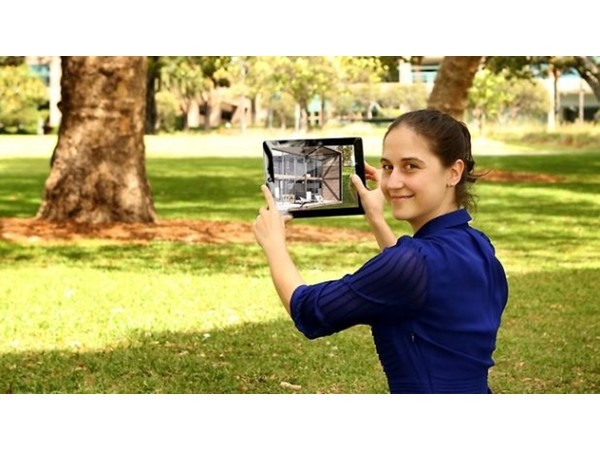It was in with the old and in with the new when the National Association of Women in Construction (NAWIC) celebrated International Women’s Day by focusing on research scholarships, the 2013 paper on augmented reality and the announcement in Sydney of the 2014 winner.
Michaela Sheahan will investigate Care, Connectivity, Collaboration: Urban design for interaction in hospital precincts – an international perspective, which will examine how leading hospital precincts in the world are designing connections within and between institutions to enable collaboration, innovation and activity. A good starting point will be to see how connections between people and buildings are set up within the precincts, Sheahan says.
The scholarship, now in its sixth year, has gone national for the first time (previously it was for NSW only) but the aim, to “challenge existing industry thinking and outline practical recommendations to enhance the Australian property and construction industry” has not changed.
“The judges agreed that the research has the potential to identify improvements in the way hospital precincts are designed and constructed in Australia,” says Richard Munao, managing director of design, furniture, lighting and accessory company, Corporate Culture, which has provided the three-year, $14,000 scholarship.
“We ... were pleased to see such a wide range of ambitious research subjects proposed. This certainly underscores the potential impact that a national scholarship can have on the industry,” says NAWIC national vice president and one of the judges, Gesa Ruge, an associate professor at the University of Canberra.
Sheahan is a researcher in Hassell's Knowledge and Sustainability Unit in Melbourne. “I relish the chance to raise awareness of applied research more generally. I am very fortunate to be one of the few researchers working within a design firm in Australia. Research in design is largely confined to academia, so this scholarship provides me with an opportunity to demonstrate to a wide audience the value of research in practice and evidence-based design,” Sheahan explains.
Appropriately, the second issue of Hassell’s digital magazine, Multitudes, is on expanding the design agenda; “how design helps shape the modern world ... the buildings and places we create”.

Feet in another form of reality, 2013 winner Rana Abboud says augmented reality’s potential for architecture is huge. “AR is any system that augments, or overlays, the real world with digital information that seems to co-exist with the real world.”
Her paper, What are the Opportunities and Obstacles for Mobile AR in key phases of architectural practice - namely, Design, Construction, and Post-Completion? looked at Mobile Augmented Reality (MAR) in particular. This “applies the concept of AR in truly mobile settings, away from the carefully conditioned environments of research laboratories and special-purpose work areas. With MAR, displays are portable, and range from smartphones, to tablets, to wearable head-mounted displays.
“MAR applications hint at a future where, for instance, virtual furniture may be overlaid in real time to check its size and appearance in a room, and overlays of past and future buildings render the city a canvas for virtual data.”
She warns that “MAR applications must surmount technological, social, and financial challenges before they are adopted into the workflow of practising architects” but with persistence and time, she is optimistic “MAR will trickle into architectural practice, softening the boundaries between the virtual and the real.”
An immediate form of reality that everyone enjoyed on the night was networking. “The secret to good networking is simple – be genuine,” says NAWIC national president, Jane Bateson. “If you are genuine in your desire to meet other people and be of service to others and our industry, you’ll make valuable connections and establish some great friendships too.”

